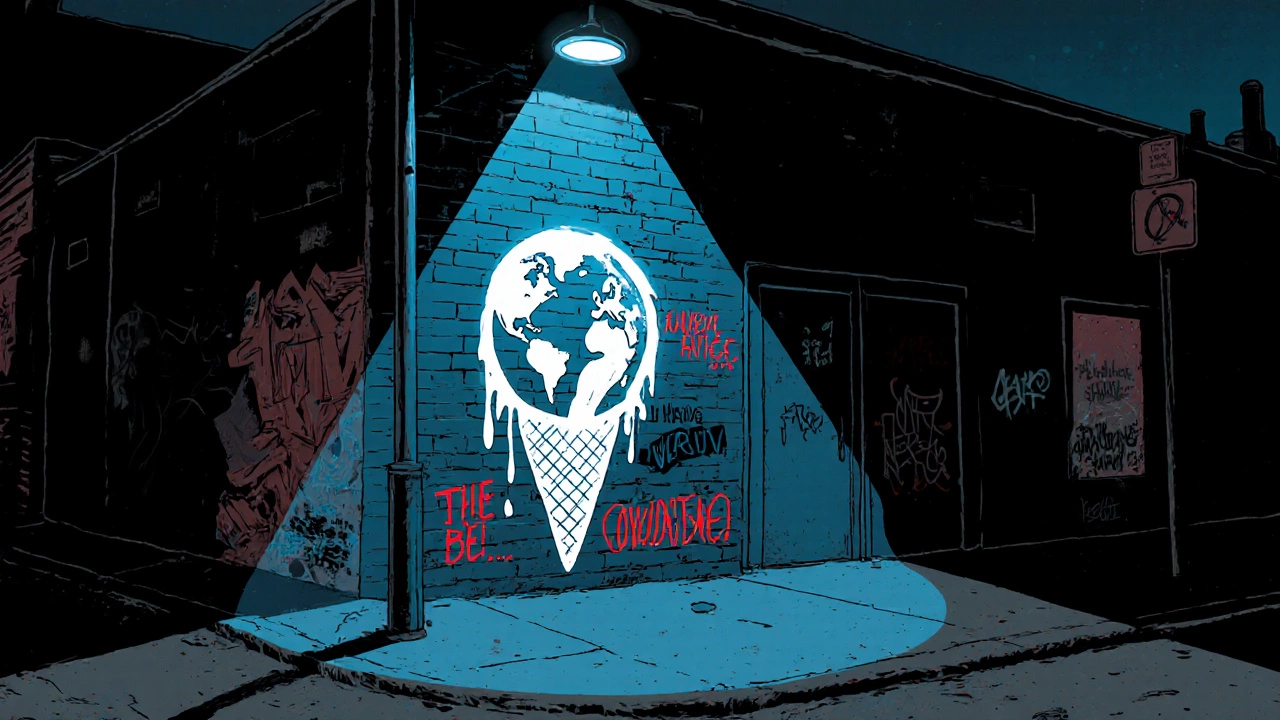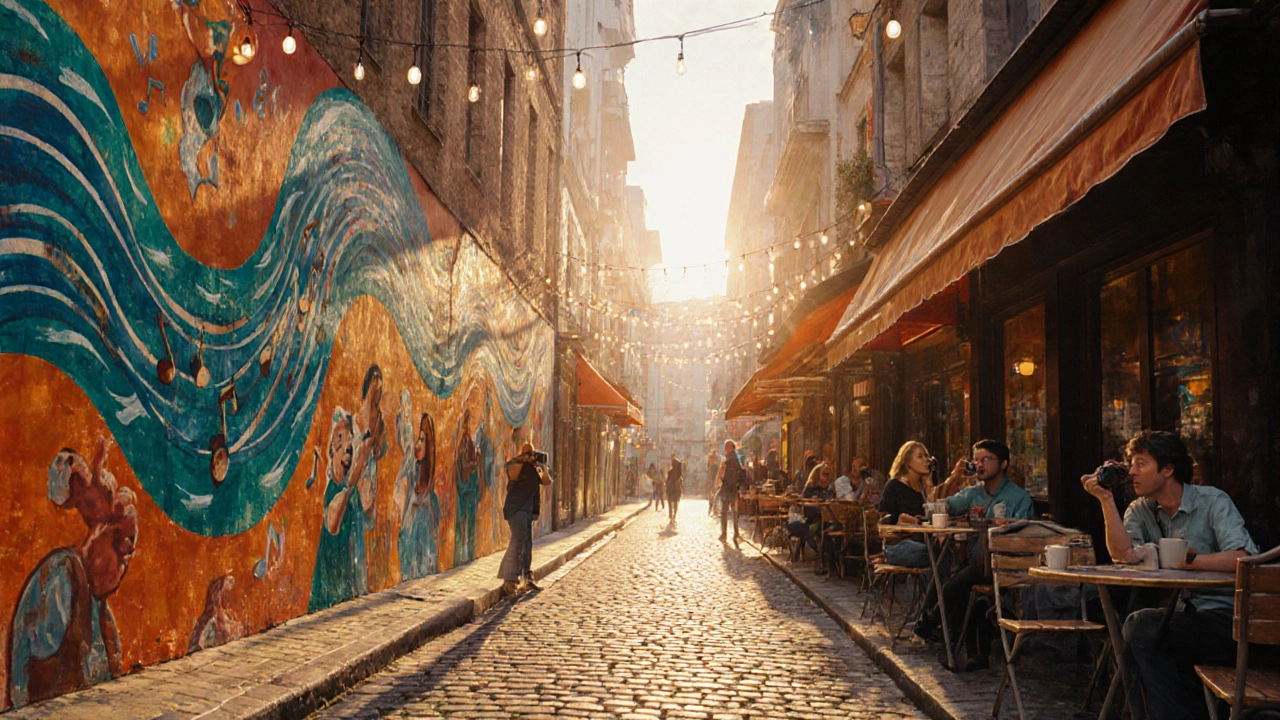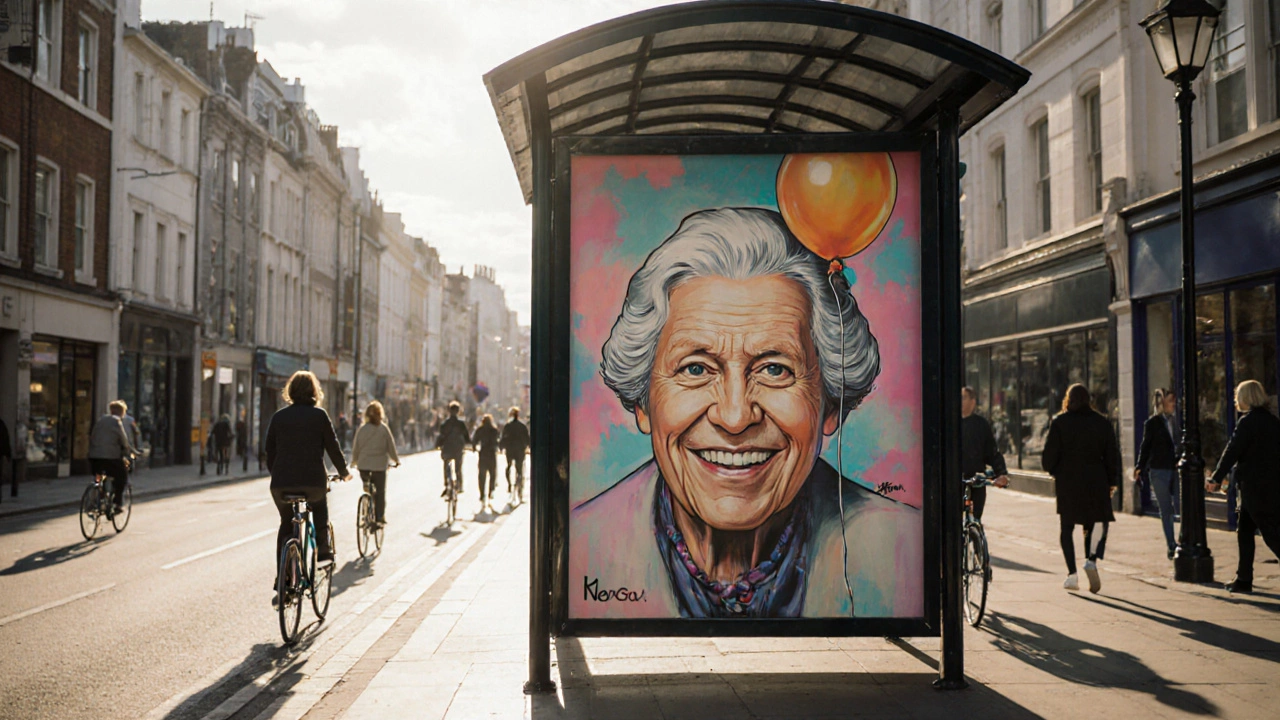When you walk down a bustling boulevard and spot a vivid mural or a daring stencil, you’re witnessing more than just eye‑catching graphics. street art purposes run deep, shaping how cities feel, how communities speak, and how ideas travel. This guide unpacks why artists claim the walls, why residents pay attention, and how the whole ecosystem benefits from that colorful clash of expression.
What Exactly Is Street Art?
Street art is a visual practice that uses public surfaces-walls, sidewalks, train cars, bridges-to convey artistic messages outside traditional galleries. It blends techniques from painting, spray‑painting, stencil work, and even digital projection. Unlike fleeting graffiti tags, street art is often intentional, curated, and designed to engage an audience that never steps inside a museum.
How Street Art Differs From Graffiti
Graffiti is the practice of marking surfaces, usually with stylized lettering, as a form of personal or group identity. While both share urban roots, graffiti leans toward personal signature and territory marking, whereas street art aims for broader communication, storytelling, and visual impact.
Purpose #1 - Turning Public Space Into a Conversation Canvas
Public space is any area that is open and accessible to all members of a community, from streets and parks to transit hubs. Street artists treat these spaces as living galleries where everyday commuters become an audience. By inserting bold visuals into routine pathways, they interrupt monotony and spark spontaneous dialogue. A mural of a smiling elderly lady on a bus shelter, for example, can make commuters pause, smile, and perhaps think about aging in a new light.
Purpose #2 - Social Activism and Political Commentary
Social activism is the effort to promote, impede, or direct social, political, or environmental change. Street art has become a go‑to medium for protest because it’s visible, immediate, and hard to ignore. From the iconic images of the Arab Spring to recent climate‑justice stencils in European cities, artists use walls to amplify dissent, memorialize victims, and demand accountability. The low barrier to entry means anyone can add a voice to a larger movement without needing a media platform.
Purpose #3 - Building Community Identity and Pride
Community identity is the shared sense of belonging, history, and values that define a group of people living in a particular area. Local murals often celebrate heritage, language, or notable figures. In Bristol, the vibrant depictions of the Avon River and the city’s music scene reinforce a collective pride that residents and tourists alike can see reflected in the streets. When neighborhoods collaborate on a mural, the process itself fosters relationships, skills sharing, and a stronger sense of place.

Purpose #4 - Urban Regeneration and Economic Boost
When cities face dereliction, a burst of color can be a catalyst for change. Urban regeneration is the renewal of decayed urban areas through infrastructure upgrades, cultural projects, and economic incentives often includes street‑art initiatives. A formerly graffiti‑tagged alley transformed into a curated mural corridor can attract cafés, boutique shops, and guided tours. Studies from the Dutch Creative Cities network in 2023 showed a 12% rise in foot traffic and a 7% increase in local business revenues after a coordinated street‑art program. The visual upgrade also improves perceived safety, as brighter environments deter vandalism.
Purpose #5 - Tourism and City Branding
Travelers love snapping photos of striking street art. Cities like Berlin, Melbourne, and SãoPaulo have turned murals into landmarks on travel itineraries. By curating a collection of signature works, municipalities create a distinctive brand that differentiates them from other destinations. This not only draws visitors but also encourages cultural exchange, as international artists bring fresh perspectives to local walls.
Purpose #6 - Experimentation and Artistic Evolution
For many creators, the street offers a low‑risk laboratory. Without gallery curators or sales pressure, artists can test new techniques-larger-scale installations, interactive augmented‑reality overlays, or biodegradable paint. The immediate feedback loop-passersby’s reactions-helps refine ideas that may later appear in formal exhibitions. This experimental freedom fuels the evolution of contemporary visual culture.
Purpose #7 - Commercial Collaboration Without Losing Edge
Brands increasingly partner with street artists to tap into authenticity. While critics argue this risks diluting the anti‑establishment spirit, thoughtful collaborations can preserve artistic integrity while providing resources for larger projects. For instance, a sneaker company might sponsor a wall that doubles as a public art piece, giving the artist a massive canvas and the brand a culturally resonant message.

Summary Table of Key Purposes
| Purpose | Typical Goal | Real‑World Example |
|---|---|---|
| Public Dialogue | Invite spontaneous conversation | Mural of a local poet on a library wall in Leeds |
| Social Activism | Raise awareness, demand change | Stencils warning about plastic waste in Brighton |
| Community Identity | Celebrate heritage, foster pride | Collective portrait of multicultural families in Bristol’s StPaul's district |
| Urban Regeneration | Revitalize blighted areas | Graffiti‑turned‑gallery alley in Manchester’s Ancoats |
| Tourism & Branding | Create visual landmarks | Berlin’s East Side Gallery as a global attraction |
| Artistic Experimentation | Test new media, scale | AR‑enabled mural in Glasgow that reacts to smartphone scans |
| Commercial Collaboration | Blend brand message with authenticity | Sneaker‑sponsored wall in London’s Shoreditch that also hosts community workshops |
How to Spot These Purposes in Your City
- Look for signs of community involvement-are local schools or charities mentioned?
- Check for activist symbols or slogans that tie to recent protests.
- Notice any QR codes or AR triggers; they hint at experimental or commercial angles.
- Observe the surrounding environment: a fresh mural in a previously neglected lane often signals regeneration.
- Read plaque text or artist statements; they usually explain intent directly.
Potential Pitfalls and How to Navigate Them
While street art brings many benefits, it can also stir controversy. Unintended gentrification, legal disputes, or cultural appropriation are real concerns. Artists and city planners can mitigate these risks by involving local residents from the concept stage, securing proper permissions, and ensuring that profits from commercial deals flow back into community projects.
Next Steps for Enthusiasts and City Makers
- Explore your neighborhood on foot and note any pieces that resonate.
- Research the artist-social media bios often reveal their motivations.
- If you’re a city official, consider launching a “wall grant” program that prioritizes projects with clear social or regenerative goals.
- Community groups can organize mural workshops, turning vacant walls into collaborative canvases.
- Support local artists by purchasing prints or attending pop‑up exhibitions that showcase street‑art origins.
Frequently Asked Questions
Is street art the same as vandalism?
Not necessarily. While both occupy public surfaces, street art is usually intentional, designed, and often approved by property owners or municipalities. Vandalism typically lacks permission and aims only to mark or damage.
How can I legally create street art?
Start by seeking permission from property owners or local councils. Many cities run “artist‑in‑residence” schemes that grant legal walls. Signing up for community mural projects is another safe route.
What materials are most commonly used?
Spray paint remains the staple, but artists also use acrylics, wheatpaste posters, stencil‑cut paper, LED lights, and even biodegradable inks for eco‑friendly projects.
Can street art increase property values?
Yes, especially when murals revitalize neglected blocks. Studies in several European cities show a modest rise in property prices after high‑profile public‑art installations.
How does street art affect local culture?
It reflects and shapes the community’s narrative, giving voice to under‑represented groups, preserving local stories, and creating shared visual symbols that become part of the city’s identity.

